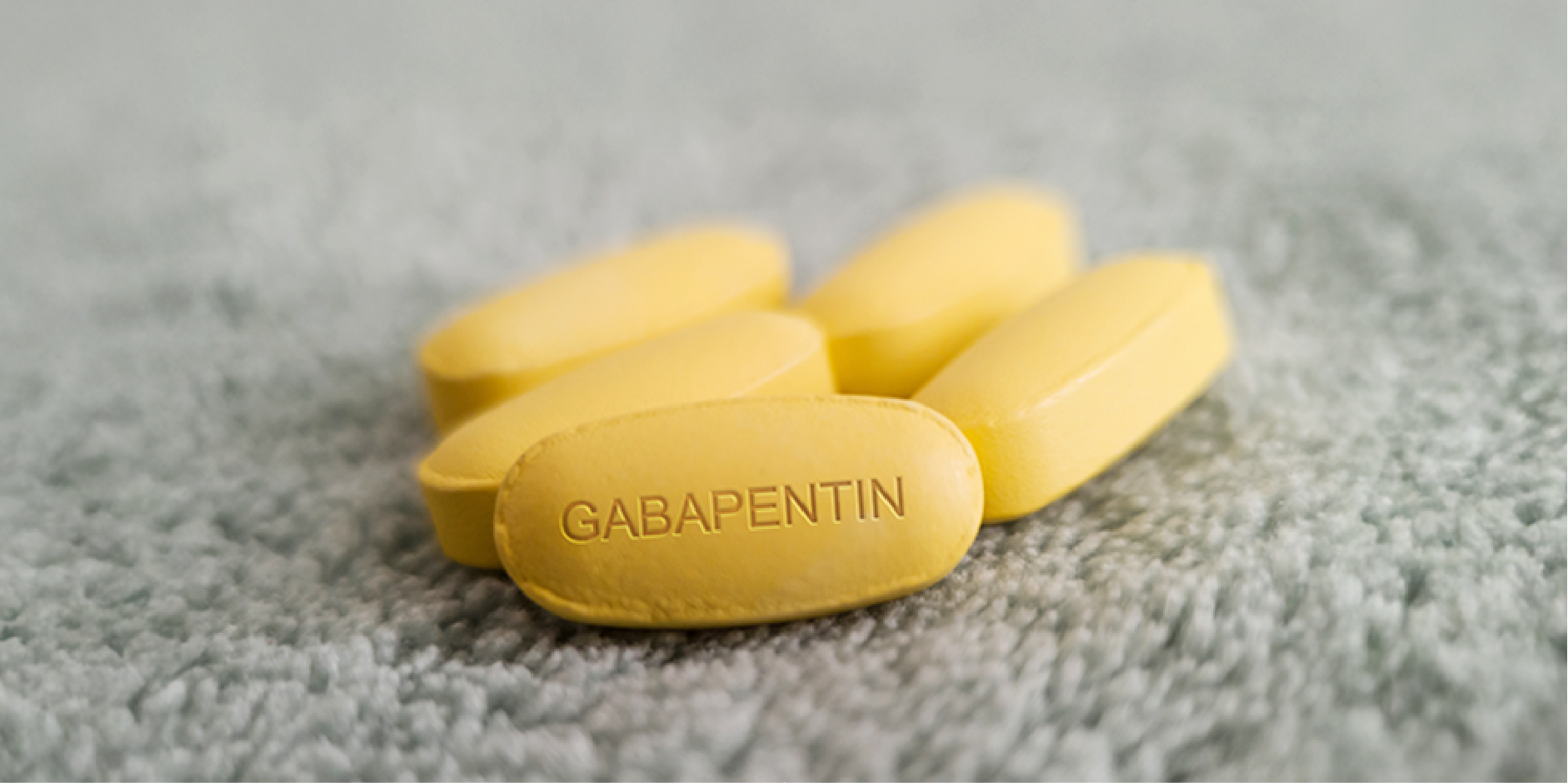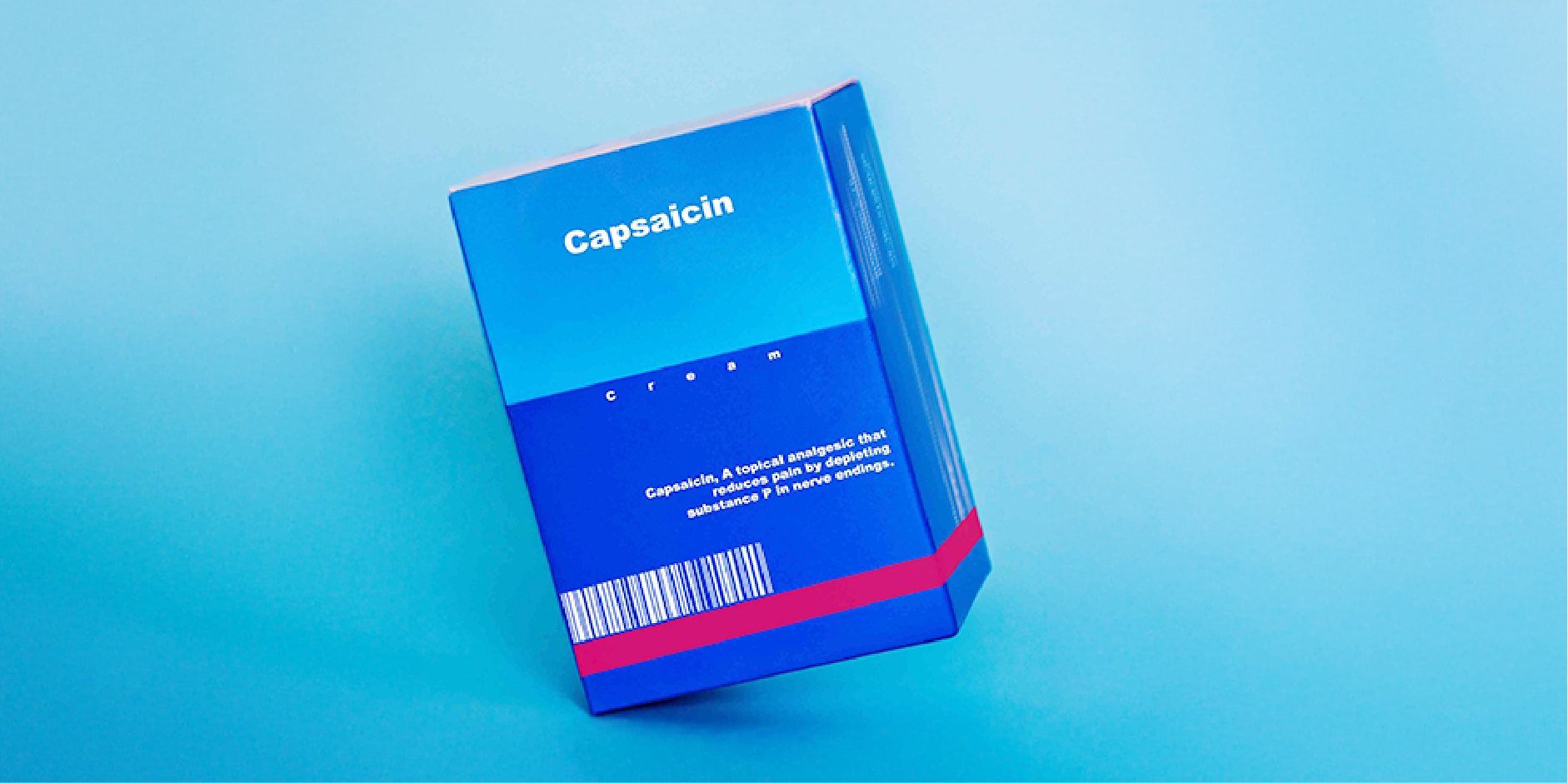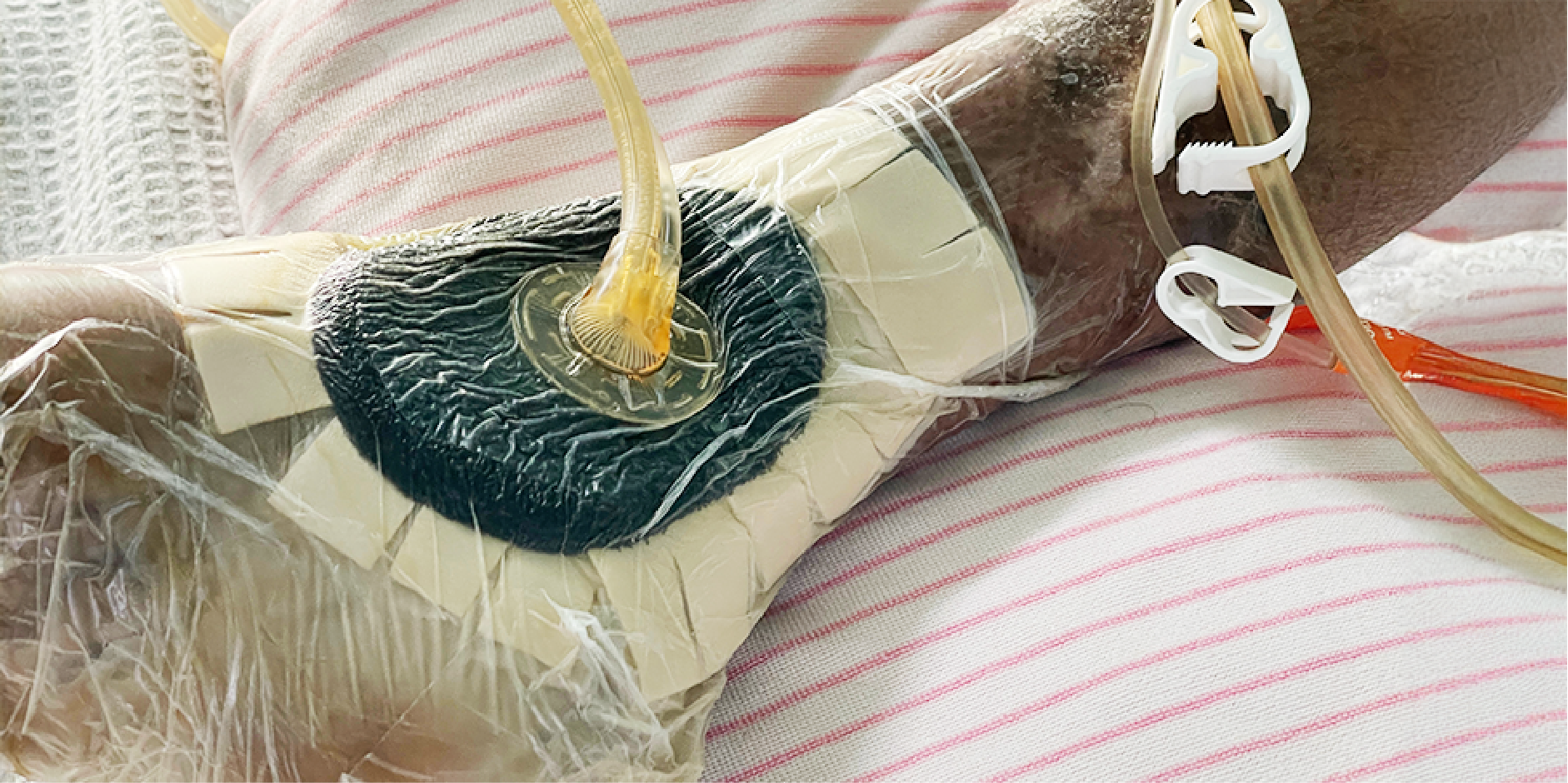Nội dung của trang này:
Nội dung của trang này:
Nguyên tắc điều trị
The goals of therapy in patients with diabetic sensorimotor
polyneuropathy include pain reduction or elimination, slowing the progression
of diabetic neuropathy, prevention of complications such as falls, diabetic
ulcers, and arthropathy, improvement in sleep quality, improvement of mobility,
and improvement in the quality of life. Factors to be considered in the
selection of a therapeutic agent for diabetic sensorimotor polyneuropathy other
than efficacy include potential adverse effects, presence of comorbidities,
cost, and patient preference.
Management of pain is individualized, and the required dose should be
gradually titrated to the lowest effective dose. Demonstrable efficacy
typically becomes evident after approximately 12 weeks. Treatment is considered
ineffective if the medication has been titrated to an effective dose and
duration without achieving pain reduction. Treatment is considered intolerable
when the adverse effects outweigh any benefits in pain reduction. Treatment
failure is considered when therapy is ineffective after 12 weeks or intolerable.
Selection of a therapeutic agent with a different mechanism of action or from a
different class of medication may increase the chances of achieving pain relief
or preventing adverse effects encountered during the initial therapy.
Combination pharmacotherapy is recommended in patients with partial response or
when the drug cannot be titrated further due to intolerable side effects. The
addition of a second agent from a different class to an agent providing only
partial efficacy may yield combined efficacy greater than either agent alone. Treatment
of concurrent mood and sleep disorders is also recommended to help reduce pain
and improve quality of life. Lastly, the goal of therapy in patients with
orthostatic hypotension is to minimize postural symptoms.
Pharmacological therapy
Painful Diabetic Sensorimotor Polyneuropathy
In initiating therapy, the dose should be slowly titrated to the
effective dose to avoid intolerance. The medication may be considered
inefficacious after increasing to the maximum dose for the duration of 12 weeks
and therapeutic efficacy is not achieved.
First-line Agents
Gabapentinoids
Example drugs: Gabapentin, Pregabalin
Gabapentinoids are anticonvulsant agents which block the presynaptic
α2δ subunit of voltage-gated calcium channels in the dorsal root ganglia,
resulting in analgesia. Pregabalin provides dose-dependent pain relief compared
to placebo. Its pain modulatory effect is due to the presynaptic inhibition of
excitatory neurotransmitter release, including glutamate, substance P, and
calcitonin gene-related peptide. Pregabalin is preferred over Gabapentin as a
first-line agent due to its more predictable pharmacokinetics, rapid onset of
action, shorter titration periods, possibility for twice-daily dosing, and lack
of dosing adjustment requirements for patients with renal disease. However,
Gabapentin has the advantage of lower cost. Gabapentinoids have the potential
to cause peripheral edema and must be with caution in patients with comorbidities
such as cardiac, renal, or liver disease. Mirogabalin, a newer α2δ ligand, is
approved in Japan for the treatment of neuropathic pain.
 Diabetic Neuropathy_Management 1
Diabetic Neuropathy_Management 1Serotonin-Norepinephrine Reuptake Inhibitors (SNRIs)
Example drugs: Desvenlafaxine, Duloxetine, Venlafaxine
SNRIs exert their effect through highly specific inhibition of serotonin and norepinephrine reuptake, allowing the availability of these neurotransmitters in the synapse. Duloxetine is considered safe and well-tolerated. Venlafaxine is an alternative to Duloxetine in the treatment of diabetic sensorimotor polyneuropathy. SNRIs also have beneficial effects on mood (eg depression) and sleep disorders.
Tricyclic Antidepressants (TCAs)
Example drugs: Amitriptyline, Desipramine, Imipramine, Nortriptyline
TCAs inhibit norepinephrine and/or serotonin reuptake at the synapses of central descending pain control systems and by antagonizing the N-methyl-D-aspartate (NMDA) receptor. They are typically considered first-line agents for painful neuropathies, including DPN, but their use may be restricted by adverse effects. Advantages of TCAs include their effect on insomnia and depression, which are common comorbidities in neuropathic pain patients. A baseline echocardiogram for patients >40 years old is recommended; TCAs should not be given to patients at risk for sudden cardiac death or with a history of cardiovascular disease.
Sodium Channel Blockers
Example drugs: Carbamazepine, Lacosamide, Lamotrigine, Oxcarbazepine, Valproic acid
According to the American Academy of Neurology (AAN), Valproic acid can be considered a treatment option for the management of DPN if multiple other effective medications have failed. However, it should not be offered to patients with childbearing potential. Carbamazepine may be an alternative for the treatment of painful DPN.
Second-line Agents
Capsaicin (Topical)
Capsaicin works by depleting substance P from sensory nerve endings, thereby reducing or abolishing the transmission of painful stimuli from peripheral nerve fibers to higher centers. It serves as an alternative treatment for patients who have contraindications to oral agents or prefer topical therapy. Capsaicin may also be added to first-line agents in patients with a partial response or intolerance to higher doses. The International Association for the Study of Pain (IASP) Special Interest Group on Neuropathic Pain (NeuPSIG) and the AAN recommend Capsaicin patches as a second-line treatment for peripheral neuropathy. Patients need to be willing to apply the agent 3–4 times daily, and that initial skin irritation may occur, typically improving within 1–2 weeks.
 Diabetic Neuropathy_Management 2
Diabetic Neuropathy_Management 2Lidocaine (Topical)
Lidocaine decreases the neuronal membrane’s permeability to sodium ions, thereby blocking the initiation and conduction of nerve impulses. It serves as an alternative for patients with intolerance to first-line agents. According to the 2015 recommendations from the IASP NeuPSIG, Lidocaine patches may be considered a second-line treatment option for neuropathic pain due to their safety profile and patient preferences.
Other Agents
Alpha-lipoic Acid (Thioctic Acid)
Alpha-lipoic acid, Thioctic acid, decreases oxygen free radicals, thereby influencing the underlying neuropathic process. It is an alternative treatment for patients with intolerance to or are refractory to first-line agents. Studies have shown that it decreases pain, paresthesias, and numbness, and has a favorable safety profile.
Benfotiamine
Benfotiamine is a lipid-soluble thiamine derivative and an advanced glycation end product inhibitor. Studies have shown that it can improve neuropathic pain in patients with diabetic neuropathy.
Botulinum Toxin Type A
Botulinum toxin type A is a potent neurotoxin that may have analgesic effects by acting on neurogenic inflammation.
Citrullus colocynthis
Citrullus colocynthis has been shown to improve pain in patients with painful diabetic neuropathy and is an alternative for patients who prefer topical therapy.
Clonidine (Topical)
Clonidine is an α2-adrenergic agonist which has been shown to reduce pain in patients with diabetic sensorimotor polyneuropathy. It may be an alternative when no other treatment options are available due to intolerance, contraindications or lack of efficacy.
Epalrestat
Epalrestat is an aldose reductase inhibitor that helps control intraneural sorbitol accumulation. It has been shown to improve pain, numbness, and autonomic functions in patients with diabetic sensorimotor polyneuropathy.
Gingko biloba
Gingko biloba has been shown to improve pain in patients with painful diabetic neuropathy and is an alternative for patients who prefer non-traditional intervention.
Nabilone
Nabilone is a synthetic cannabinoid which may improve pain in patients with painful diabetic neuropathy.
Nitrates (Topical)
Nitrosense patch has been shown to improve pain in patients with painful diabetic neuropathy. Glyceryl trinitrate spray or patch or Isosorbide dinitrate spray act as vasodilators and smooth muscle relaxants. They alter neuronal nitric oxide synthase in the dorsal root ganglion cells and the spinal cord, leading to neuronal plasticity. These agents have been shown to improve pain in patients with painful diabetic neuropathy and may serve as an alternative for those who prefer topical therapy. According to the AAN, they may be used as a second-line treatment option.
SNRI/Opioid Dual Mechanism Agents
Example drugs: Tapentadol, Tramadol
SNRI/opioid dual mechanism agents are centrally acting opioids that exert analgesic effects through both μ-opioid receptor agonism and inhibition of norepinephrine and serotonin reuptake. Tapentadol, an opioid with noradrenaline reuptake inhibition and higher affinity for the μ-opioid receptor, is approved for the treatment of diabetic polyneuropathy in patients requiring continuous, around-the-clock opioid treatment in the absence of adequate alternative treatment options. However, the use of opioids for the treatment of diabetic sensorimotor polyneuropathy is not recommended by the 2022 AAN and the 2025 ADA guidelines due to their poor safety profile and increased risk of respiratory depression and addiction. The AAN recommended that patients who are currently on opioids for the treatment of DPN may be offered the option to taper off the medication and be shifted to alternative non-opioid treatments. Nevertheless, the 2010 European Federation of Neurological Societies (EFNS) and the 2015 IASP NeuPSIG have recommended Tapentadol as a treatment option for DPN when non-pharmacological treatments or non-opioid analgesics are not effective and/or not tolerated and/or contraindicated.
Vitamin B1, B6, and/or B12
Vitamin B1, B6, and/or B12 promote myelin production and repair and reduce neuropathic pain. Vitamin B12 is recommended for Metformin-treated DM patients who have vitamin B12 deficiency and peripheral neuropathy. Neurotropic B vitamins (B1, B6, and B12) are indicated for patients with sensory peripheral neuropathy resulting from metabolic diseases, medication or drug use, nutritional deficiencies, and other causes. These vitamins may also be given as prophylaxis in patients at high risk of developing peripheral neuropathy or as part of treatment to prevent its progression.
Diabetic Autonomic Neuropathy
Constipation
Gelling agents (eg Pectins, Psyllium) and Laxatives (eg Bisacodyl, Lactulose, Macrogol, Sodium picosulfate) can be used in the treatment of constipation in diabetic autonomic neuropathy.
Diabetic Cystopathy
Alpha receptor blockers and anticholinergics are options for the management of diabetic cystopathy.
Diarrhea
Management of diarrhea in diabetic autonomic neuropathy may include bulking agents, Cholestyramine, Clonidine, Loperamide, and Octreotide.
Dysphagia
Prokinetic agents can be used in patients with dysphagia.
Erectile Dysfunction
Phosphodiesterase type 5 inhibitors (eg Sildenafil, Tadalafil, Vardenafil) and intracorporeal or intraurethral prostaglandins can be used in the management of erectile dysfunction.
Gastroparesis
Metoclopramide, a prokinetic agent, is approved for use in the treatment of severe gastroparesis not responsive to other medications; however, it must be used ≤12 weeks. Other short-term treatment options include Domperidone and Erythromycin.
Orthostatic Hypotension
Fludrocortisone, Droxidopa, and Midodrine are approved agents for the treatment of orthostatic hypotension. Octreotide, a somatostatin analogue, may be used in patients with refractory and symptomatic postural or postprandial hypotension. The use of shorter-acting agents for BP control at bedtime is recommended for patients with high supine BP. Preferred agents include Atenolol, Clonidine, Guanfacine, Isradipine, and Metoprolol tartrate, while Enalapril used as an alternative if the patient is unable to tolerate the preferred agents.
Reflux Disease
Proton pump inhibitors (PPIs) can be used for those with reflux disease.
Sudomotor Dysfunction
Management of sudomotor dysfunction may include anticholinergic agents, low-dose Clonidine, topical agents containing urea or fat, topical Glycopyrrolate cream, and Botulinum toxin in patients with focal hyperhidrosis.
Nonpharmacological
Painful Diabetic Sensorimotor Polyneuropathy
Patient
Education
General
preventive foot self-care education is recommended for all patients with
diabetes, including those with LOPS. Patients must be advised on proper daily
foot monitoring and care, as well as the selection of appropriate footwear. Patients
with no or low risk for foot ulceration and amputation are managed with education
and self-care practices. Additionally, patients should be counseled on how to
optimize their glycemic control, including guidance on regular glucose
monitoring.
Lifestyle
Modification
A
low-calorie diet is recommended as part of lifestyle modification for painful diabetic
sensorimotor polyneuropathy. Exercise also plays a crucial role as it
helps improve balance, function, peripheral nerve conduction velocity, and
glycemic control. Supervised aerobic and/or resistance training has been shown
to cause nerve fiber regeneration in patients with type 2 DM. Endurance
training may decrease neuropathic pain and improve nerve conduction, symptoms,
vibration perception threshold, blood glucose levels, daily function, arterial
blood flow, and quality of life. Combined endurance and strength training may improve
small fiber function and mobility. Balance training may decrease pain,
tingling, anxiety, depression, concerns about falling, blood inflammatory
markers, and improve quality of life, mobility, trunk strength, function, and
blood glucose levels. Combining balance training with gait training, or
utilizing whole-body vibration and resistance training, may also help improve
balance, mobility, vibration perception, and gait, as well as decrease concerns
about falling. Studies have also demonstrated that exercise reduces the occurrence
of diabetic foot ulcers. Additionally, patients should be advised to consume
only moderate amounts of alcohol and to stop smoking.
 Diabetic Neuropathy_Management 3
Diabetic Neuropathy_Management 3Glycemic Control
Optimized glucose control can prevent or delay the development of diabetic sensorimotor polyneuropathy and CAN in patients with type 1 DM, resulting in a 78% relative risk reduction of diabetic sensorimotor polyneuropathy. In patients with type 2 DM, optimized glucose control can prevent or slow the progression of diabetic sensorimotor polyneuropathy, achieving a relative risk reduction of 5–9%. However, type 2 DM patients may still develop diabetic sensorimotor polyneuropathy despite adequate glycemic control as it does not reverse neuronal loss.
Lipid Control
Lipid control helps prevent diabetic sensorimotor polyneuropathy progression in type 2 DM patients and delay diabetic sensorimotor polyneuropathy progression in type 1 DM patients.
BP Control
BP control is necessary to prevent diabetic sensorimotor polyneuropathy progression in type 2 DM patients and delay diabetic sensorimotor polyneuropathy progression in type 1 DM patients.
Proper Foot Care
An annual comprehensive foot evaluation is recommended to identify risk factors for ulcers and amputations in patients with diabetes. Patients should be advised on proper daily foot monitoring and care, including selecting appropriate footwear. Patients should be advised against walking barefoot at home, and the use of open-toed shoes. Specialized therapeutic footwear is recommended for patients with DM at high risk for ulceration, including patients with poor glycemic control, LOPS, foot deformities (eg bunions, Charcot joint, hammertoes), ulcers, callous formation, poor peripheral circulation, or a history of amputation. Custom-made orthotic devices may reduce peak plantar pressures. Notably, rocker soles and metatarsal accommodations reduce peak plantar pressures significantly compared to insoles alone. Well-fitted athletic or walking shoes with customized pressure-relieving orthoses are recommended for patients with increased plantar pressures. Extra-depth shoes are recommended for patients with foot deformities. Custom-made footwear is recommended for patients with Charcot foot. The use of moisturizers for dry scaly skin is recommended as initial management for patients with risk of foot ulceration and amputation. Lastly, self-care of ingrown nails and calluses is not recommended.
Initial Ulcer Management
Initial management of ulcerations includes the offloading of plantar ulcerations, debridement of necrotic and non-viable tissues, revascularization of ischemic wounds, when necessary, treatment of bone and soft tissue infections when present, and the use of physiologic, topical dressing. Patients with wounds with <50% reduction in size after 4 weeks of optimized wound management should be managed with advanced wound therapies by a multidisciplinary team.
Advanced Wound Therapies
Negative-pressure wound therapy may be either standard electrically powered or mechanically powered. It is used in wound preparation for skin grafts and flaps as well as in the closure of deep, large wounds. Oxygen therapies include hyperbaric oxygen therapy, which uses a chamber to deliver oxygen with the intention of increasing tissue oxygenation to increase perfusion and neovascularization, fight resistant bacteria, and stimulate wound healing. However, studies have shown no benefit in patients with diabetic foot ulcers without ischemia and/or infection. In contrast, topical oxygen is effective in healing chronic diabetic foot ulcers and is available in different modalities including continuous delivery, low-constant pressure, and cyclical pressure devices. This has the advantage of being a home-based therapy. Oxygen-releasing sprays and dressings are also utilized. Biophysical modalities such as electrical stimulation or diathermy, pulsed electromagnetic fields or pulsed radiofrequency energy, and extracorporeal shock wave therapy upregulate growth factors or cytokines to stimulate wound healing. While low-frequency non-contact ultrasound is used for wound debridement. Growth factors are commonly used to hasten healing of chronic superficial wounds. These include Becaplermin (a platelet-derived growth factor), fibroblast growth factor, and epidermal growth factor. Autologous blood products such as platelet-rich plasma, leukocyte, platelet, fibrin multilayered patches, and whole blood clots are also used in advanced wound therapies. Additionally, acellular matrix tissues are also commonly used to hasten healing of chronic superficial wounds including xenograft dermis and xenograft acellular matrices (eg human dermis products, human pericardium, placental tissues).
 Diabetic Neuropathy_Management 4
Diabetic Neuropathy_Management 4Bioengineered allogeneic cellular therapies are commonly used to accelerate the healing of chronic superficial wounds. These include bilayered skin equivalents (human keratinocytes and fibroblasts) and dermal replacement therapies (human fibroblasts). Stem cell therapies may also be employed, which can be autogenous (bone marrow-derived stem cells) and allogeneic (amniotic matrix with mesenchymal stem cells). In addition, other active dressings such as hyaluronic acid, honey dressings, and sucrose octasulfate dressings can also be utilized.
Psychological Approaches
Cognitive behavioral therapy (CBT) may be of benefit in reducing pain severity and interference in patients with painful diabetic neuropathy who prefer non-pharmacologic therapy. Mindfulness may also be an option for patients who prefer non-pharmacologic therapy.
Alternative Therapies
Alternative therapies for diabetic sensorimotor polyneuropathy include acupuncture, electrical spinal cord stimulation, which can be an option for patients who are resistant to pharmacotherapies but must be performed in specialized centers. Other modalities such as frequency-modulated electromagnetic neural stimulation (FREMS), physiotherapy or exercise, this may be an option for patients who prefer non-pharmacologic therapy, repetitive transcranial magnetic stimulation (rTMS), and transcutaneous electrical nerve stimulation (TENS) may also be utilized. TENS is an alternative to patients with intolerance to pharmacological therapies.
Diabetic Autonomic Neuropathy
Constipation
Sufficient fluid intake, diet rich in fiber-rich food (eg wheat bran, linseed, and increased physical activity are recommended.
Diabetic Cystopathy
Management for diabetic cystopathy include behavioral changes (such as “timed voiding” and “double voiding”), biofeedback, bladder neck incision, electrical stimulation, self-catherization, and suprapubic cystostomy.
Erectile Dysfunction
Management of erectile dysfunction include reviewing medications and avoiding drugs which can cause sexual dysfunction (tranquilizers, antidepressants), vacuum devices, and penile prostheses.
Gastroparesis
A low-fiber, low-fat diet in small frequent meals with a higher proportion of liquid calories is recommended. Small particle-sized food may improve symptoms. Reviewing medications is also important. Withdrawing drugs with adverse effect on GI motility (eg anticholinergics, glucagon-like peptide receptor agonists [GLP-1 RAs], opioids, Pramlintide, and TCAs, may help improve intestinal motility. Gastric electrical stimulation with the use of surgically-implantable device is reserved for patients with severe symptoms and is refractory to other therapies.
Orthostatic Hypotension
- Physical activity
- Exercise and physical activity are recommended
- Salt intake
- Adequate salt intake is recommended
- Review of medications
- Avoidance of medications that aggravate hypotension is recommended
- Compressive garments
- Use of compressive garments over the legs and abdomen is recommended
- Other measures to minimize orthostatic
hypotension include:
- Slowly changing postures or standing slowly in stages
- Elevation of the head of the bed by 10-20 degrees
- Performing feet dorsiflexion or handgrip exercise before standing
- Tensing the legs by crossing them while actively standing on both legs
Sudomotor Dysfunction
Avoidance
of intense heat is important.
Phòng ngừa
Lifestyle
Modification
- Low calorie diet
- Exercise or physical activity
- Endurance training may significantly decrease the risk of diabetic sensorimotor polyneuropathy
- Moderate to vigorous aerobic exercise for 150 minutes and 2-3 sessions per week of resistance training are recommended
- Body weight maintenance
- Achievement of normal body weight is recommended for patients with obesity or overweight patients
- Bariatric surgery has been shown to reduce incidence of neuropathy in patients with type 2 DM
Glycemic
Control
Optimized glucose control will prevent or delay the development of diabetic
sensorimotor polyneuropathy and CAN in patients with type 1 DM. CAN incidence reduction
of 53% was observed in patients with intensive insulin therapy as shown in the
Diabetes Control and Complications Trial (DCCT). This also will result in 78%
relative risk reduction of diabetic sensorimotor polyneuropathy. Optimized glucose
control will prevent or slow the progression of diabetic sensorimotor
polyneuropathy and prevent CAN in type 2 DM patients; this will result in a
5–9% relative risk reduction of diabetic sensorimotor polyneuropathy. It is
important to note that type 2 DM patients may still develop diabetic
sensorimotor polyneuropathy even with adequate glycemic control. The Action to
Control Cardiovascular Risk in Diabetes (ACCORD) trial further has shown that
intensive glycemic and BP control can prevent CAN.
BP
Control
BP
control is necessary to prevent diabetic sensorimotor polyneuropathy
progression in type 2 DM patients and delay diabetic sensorimotor
polyneuropathy progression in type 1 DM patients.
Lipid
Control
Lipid
control helps prevent diabetic sensorimotor polyneuropathy
progression in type 2 DM patients and delay diabetic sensorimotor
polyneuropathy progression in type 1 DM patients.
Footcare
A
comprehensive foot assessment is recommended upon diagnosis and annually
thereafter. Patients should be instructed to inspect their feet regularly for
the presence of fissures, dry or cracking skin, plantar callus formation, and signs
of early infection, particularly between the toes and around the toenails to
help lower the risk of complications. Specialized therapeutic footwear is recommended
for patients with DM at high risk for ulceration, including those with LOPS,
foot deformities, ulcers, callous formation, poor peripheral circulation, or a
history of amputation.
